Swing Your Lady

Brief Synopsis
Cast & Crew
Ray Enright
Humphrey Bogart
Frank Mchugh
Louise Fazenda
Nat Pendleton
Penny Singleton
Film Details
Technical Specs

Synopsis
Wrestler Joe Skopapolous, together with his manager, Ed, and his trainers, Popeye and Shiner, arrives in a small town in the Ozarks hoping to promote a wrestling match. Things look hopeless because there is no local candidate for Joe's opponent until Ed meets the blacksmith, a woman named Sadie. Believing it would be a good gimmick for Joe to wrestle with Sadie, Ed offers her $100 to compete. She readily agrees because she needs the money to buy a suite of bedroom furniture. Unfortunately for Ed's plans, Joe meets Sadie on a training run and falls madly in love with the large woman. When Joe learns that Sadie is his opponent, he refuses to fight her even though she begs him. Things look bleak until Ed learns that Sadie has been courted by Noah, a huge mountain man. Ed sets up a match between the two rivals, and for promotion, tells everyone that Sadie will marry the winner. Sadie favors Joe, which does not suit Ed. He shows her a picture of a woman and her children and leads her to believe that they belong to Joe. Furious, she announces that she is going back to Noah, and Ed has to convince Joe to lose the fight. Joe reluctantly agrees, but midway through the contest, Ed learns that Madison Square Garden wants to present the winner, so he signals to Joe, who rapidly overcomes his opponent. Joe marries Sadie and gives up the ring for the blacksmith shop.

Director
Ray Enright
Cast

Humphrey Bogart
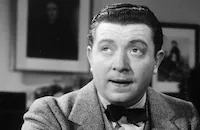
Frank Mchugh

Louise Fazenda
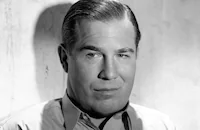
Nat Pendleton

Penny Singleton

Allen Jenkins
Leon Weaver
Frank Weaver
Elviry Weaver
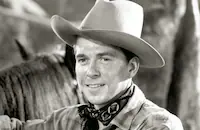
Ronald Reagan
Daniel Boone Savage

Hugh O'connell
Tommy Bupp
Sunny Bupp
Joan Howard
Sue Moore
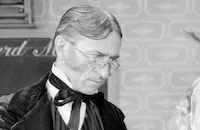
Olin Howland

Sammy White
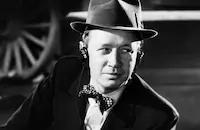
Eddie Acuff

Irving Bacon
Roger Gray
Vic Potel
John "skins" Miller
Foy Van Dolsen
Frank Pharr
George Ovey
Georgia Simmons
June Gittelson
Crew
Louis Baum
Sam Bischoff
Bobby Connolly
Adolph Deutsch
Arthur Edeson
Leo F. Forbstein
Jo Graham
Esdras Hartley
Jesse Hibbs
M. K. Jerome
Jack Killifer
Charles Lang
Maurice Leo
Jack Scholl
Joseph Schrank
Howard Shoup
Jack L. Warner

Photo Collections
Film Details
Technical Specs

Articles
Swing Your Lady
Unfortunately for Ed's plans, Joe meets Sadie on a training run and falls madly in love with the large woman. When Joe learns that Sadie is his opponent, he refuses to fight her even though she begs him. Things look bleak until Ed learns that Sadie has been courted by Noah, a huge mountain man. Ed sets up a match between the two rivals, and for promotion, tells everyone that Sadie will marry the winner.
Sadie favors Joe, which does not suit Ed. He shows her a picture of a woman and her children and leads her to believe that they belong to Joe. Furious, she announces that she is going back to Noah, and Ed has to convince Joe to lose the fight. Joe reluctantly agrees, but midway through the contest, Ed learns that Madison Square Garden wants to present the winner, so he signals to Joe, who rapidly overcomes his opponent. Joe marries Sadie and gives up the ring for the blacksmith shop.
Director: Ray Enright
Screenplay: Joseph Schrank; Maurice Leo; Kenyon Nicholson, Charles Robinson (play)
Cinematography: Arthur Edeson
Art Direction: Esdras Hartley
Music: Adolph Deutsch
Film Editing: Jack Killifer
Cast: Humphrey Bogart (Ed Hatch), Frank McHugh (Popeye Bronson), Louise Fazenda (Sadie Horn), Nat Pendleton (Joe Skopapolous), Penny Singleton (Cookie Shannon), Allen Jenkins (Shiner Ward), Leon Weaver (Waldo Davis), Frank Weaver (Ollie Davis), June Weaver (Mrs. Davis), Ronald Reagan (Jack Miller), Daniel Boone Savage (Noah Webster), Hugh O'Connell (Smith), Tommy Bupp (Rufe Horn), Sunny Bupp (Len Horn).
BW-78m.

Swing Your Lady
Ronald Reagan, 1911-2004 - TCM Remembers Ronald Reagan
Ronald Reagan, the actor turned elected official whose fascinating career saw him develop as a contract player for Warner Brothers studios, to a politician who fulfilled his ambitions by becoming the 40th President of the United States, died at his home in Los Angeles on June 5 after a long battle with Alzheimer's disease. He was 93.
He was born Ronald Wilson Reagan on February 6, 1911 in Tampico, Illinois to John and Nelle Reagan. When Reagan was nine, his family settled down in the small community of Dixon, about 100 miles west of Chicago. After high school, Reagan enrolled in Eureka College, a small Christian school near Peoria. He graduated in 1932 with a degree in Economics, and pursued a career in broadcasting. His first gig was as a part-time announcer at WOC in Davenport, Iowa. Within a year, WOC had merged with its big-sister station, WHO in Des Moines, and Reagan was hired as a sports announcer.
In the spring of 1937, Reagan drove to Southern California to catch the Chicago Cubs in spring training on Santa Catalina Island. While he was in California, he wrangled a screen test and signed a contract for $200 a week with Warner Brothers. His film debut was rather inauspicious; he portrayed a radio announcer in an innocuous comedy Love is on the Air (1937). He made a few more "B" programmers like Hollywood Hotel (also 1937), and Girls on Probation (1938), before getting his first prominent role opposite Bette Davis in the popular tearjerker, Dark Victory (1939).
Although he seldom got credit for being a good actor, there was no denying that Reagan held his own given the right material: Knute Rockne, All American as the doomed Notre Dame football hero George "The Gipper" Gipp, where he delivered the film's immortal line "Win one for the Gipper!"; Santa Fe Trail in which he ably supports Errol Flynn in one of the boxoffice hits of its era (both 1940); Kings Row (1941), featuring one of his finest performances as a small-town playboy whose legs are amputated by a careless surgeon; and Desperate Journey (1942) where he again supported Flynn in an exciting action picture.
Due to his poor eyesight, Reagan didn't see any action in World War II, so the studio heads assigned him to star in a series of patriotic films produced by the First Motion Picture Unit of the Army Air Forces in Culver City. Between 1942-45, Reagan starred in over 400 of these films. After the war, Reagan still found some good roles: The Voice of the Turtle (1947) proved he had a deft hand at light comedy opposite Eleanor Parker; The Hasty Heart (1949) offered another underrated performance as he ably portrayed the Yank in John Patrick's much heralded wartime play; and Storm Warning (1950) was a slick melodrama that cast Reagan as a crusading District Attorney determined to bring the KKK in a small southern town, with the help of Doris Day and Ginger Rogers!
It was around this time that Reagan became involved in politics. In 1947, he began a five-year term as president of the Screen Actors Guild (SAG), and testified in October of that year before the newly formed House Un-American Activities Committee (HUAC). He identified suspected Communists Larry Parks, Howard Da Silva and Alexander Knox, all of whom were subsequently called to testify, and subsequently blacklisted. Later records showed Reagan was so concerned about the Communist influence in Hollywood, that he became an FBI informer.
As Reagan became steeped in his political career, his parts throughout the '50s became inferior: the notorious Bedtime for Bonzo (1951); the coy "sex" comedy She's Working Her Way Through College (1952) that cast him as a college professor who romances a stripper! (Virginia Mayo); Cattle Queen of Montana (1955), a sluggish Western that even the redoubtable Barbara Stanwyck couldn't save; and finally Hellcats of the Navy (1957), a stodgy war picture that would be his only film that co-starred his wife Nancy (Davis).
Television offered some salvation. For eight years, (1954-62), Reagan served as the host of General Electric Theater, a televised series of dramas. He also found a niche as GE's goodwill ambassador to employees and to civic and business groups around the country, furthering his taste and honing his craft as a public official. By the mid '60s, Reagan would move into politics entirely, save for one last film, the thrilling The Killers (1964), Reagan's only known villainous role, as a murderous gangster. That same year, he actively campaigned for Republican Presidential candidate Barry Goldwater, although Goldwater lost to Lyndon B. Johnson.
Reagan whose profile was riding high, had cemented his future as a successful politician. In 1966, he ran against incumbent Governor Pat Brown for the state of California and won, serving successfully for two terms until 1974.
Reagan began an all-out, two-year drive to wrest the 1976 nomination from incumbent Gerald R. Ford, an appointed vice president who became president on the resignation of Nixon. Reagan fell short by a handful of delegates to the Republican national convention. But Ford lost to Jimmy Carter, and Reagan became the front-runner to challenge Carter in 1980. After defeating Carter, Reagan held two terms as President of the United States (1981-89). After his second term was over, he retired quietly in California. In 1994, it was revealed to the media that Reagan was suffering from Alzheimer's disease; he had been kept out of the public eye since then.
He was married briefly to actress Jane Wyman (1940-48), and had two children; a daughter Maureen and an adopted son, Michael. In 1952, he married a budding film starlet, Nancy Davis, who bore him two more children; a daughter, Patty; and a son, Ronald Jr. Ronald Reagan is survived by Nancy, Michael, Patty and Ron Jr. His daughter Maureen died of Melanoma in 2001 at the age of 60.
by Michael T. Toole
Ronald Reagan, 1911-2004 - TCM Remembers Ronald Reagan
Quotes
Trivia
Notes
The Weaver Brothers & Elviry were a vaudeville team. For additional information on their careers, please see entry above for Down in "Arkansaw". According to Film Daily, Daniel Boone Savage was a professional wrestler who made his film debut in this feature. Nat Pendleton was a former Olympic and professional wrestler.

Miscellaneous Notes
Released in United States Winter January 8, 1938
b&w
Released in United States Winter January 8, 1938














